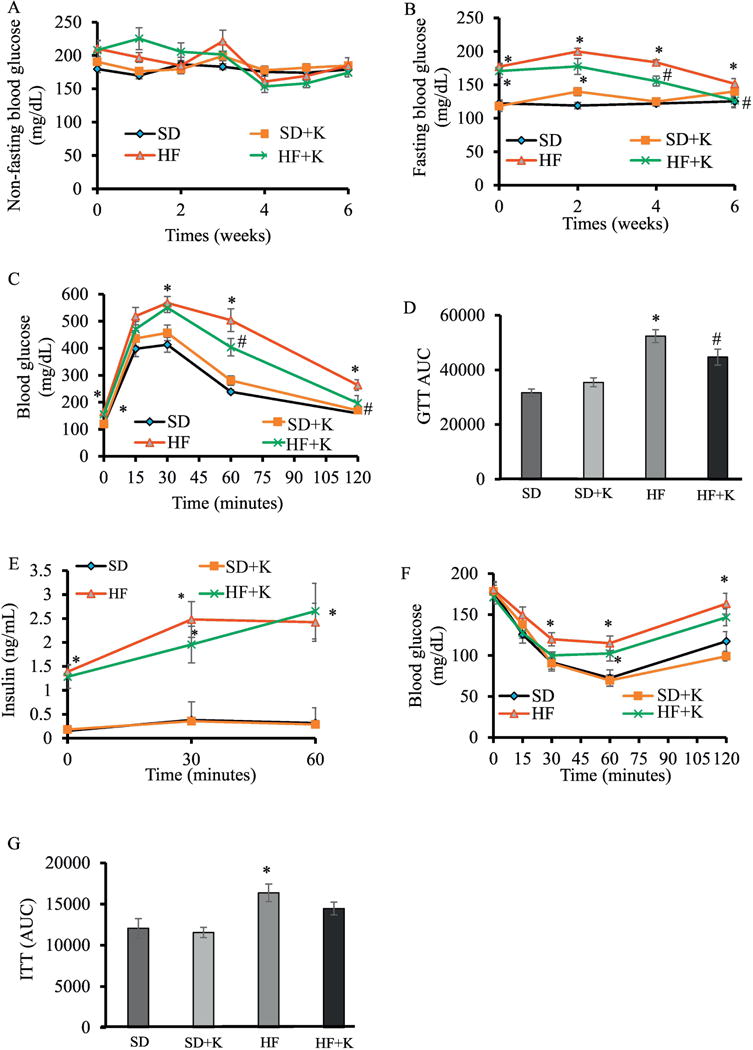Fig. 1.

Kaempferol treatment reduced fasting blood glucose, improved glucose tolerance, and improved insulin sensitivity in HF diet-fed mice. Mice (4 mo old, male) were fed either a SD or a HFD for 8 wks, followed by dietary treatment with either kaempferol (50 mg/kg/d) or vehicle via oral gavage for 6 wks. (A) Non-Fasting and (B) fasting blood glucose levels were measured at indicated time points of dietary treatment. Data of intraperitoneal GTT (C) performed as described in the Method section and the area under the curve (AUC) calculated using the trapezoidal rule (D). (E) Blood glucose was withdrawn at time 0, 30, and 60 min after IP glucose injection to measure plasma insulin levels. Results from performing intraperitoneal ITT (F) and the AUC (G). Data are shown as Mean ± SEM (n=9). *, P < 0.05 vs. SD-fed mice (SD); #, P < 0.05 vs. HF-fed mice (HF). SD: SD diet; SD + K: SD diet with kaempferol treatment; HF: HF diet; HF + K: HF diet with kaempferol treatment.
